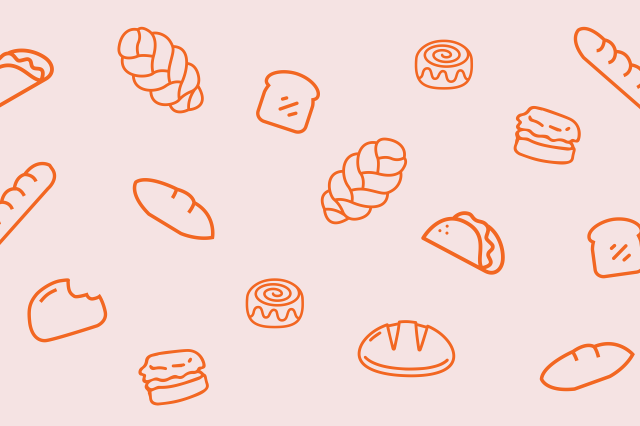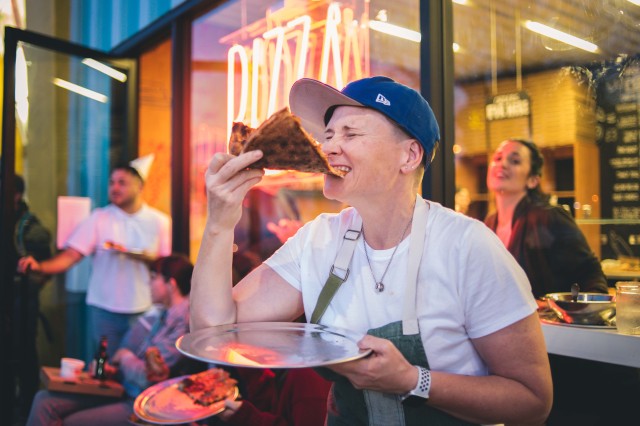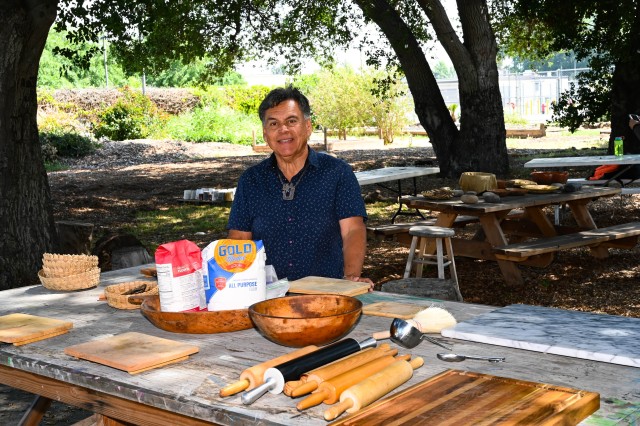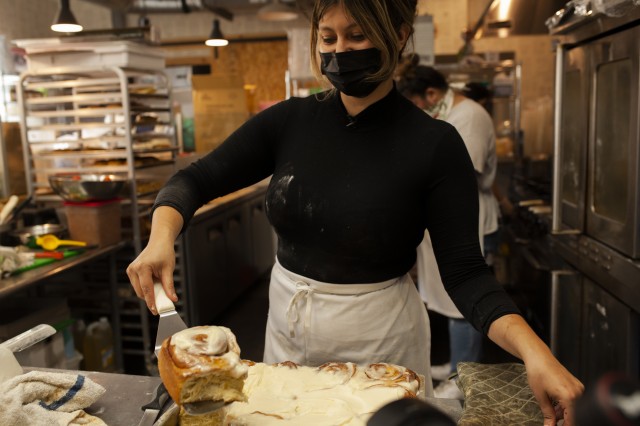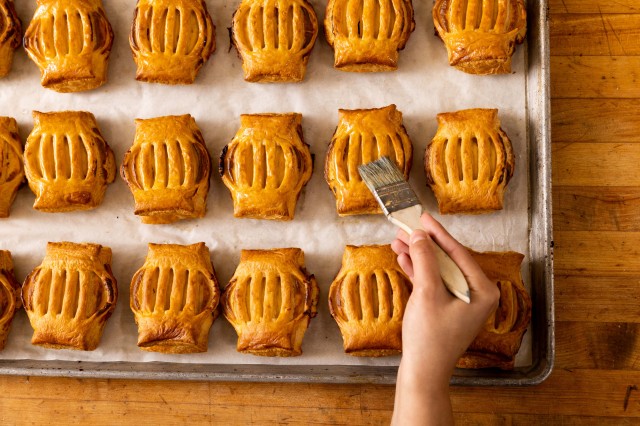
Connecting Us Through Our Stomachs And Our Hearts
A Bread lover’s (and Museum Educator) reflection on the Kneaded LA Project
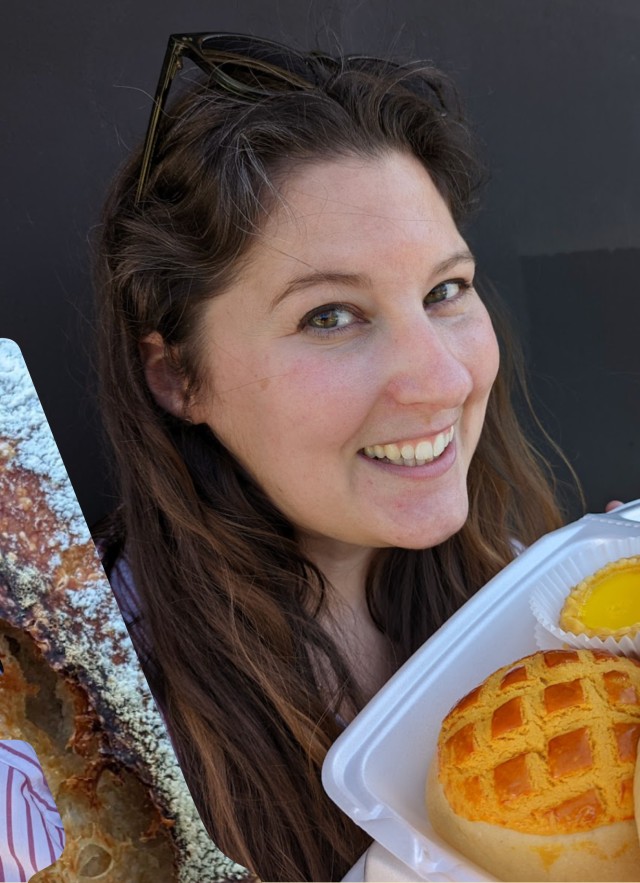
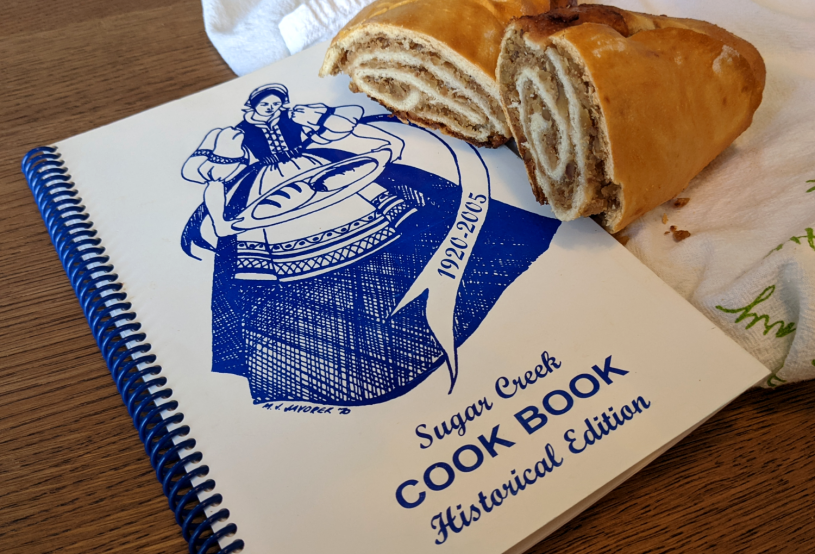
We all have that recipe page– it’s stained, annotated and it has been passed down from generation to generation or is simply your go-to comfort food. For me, it’s a page from my Slovakian great-grandmother's community cookbook for homemade povitica or walnut bread (recipe below). In my family, Christmas wishes are always accompanied by a report on how your respective loaves of walnut bread turned out that year.
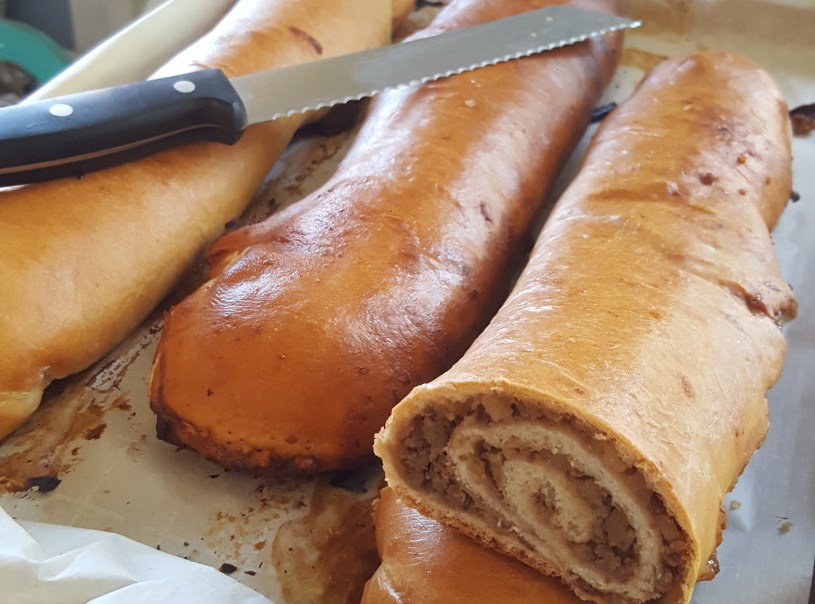
A BAKER BY ANY OTHER NAME
Nearly everyone can name a memory associated with bread– and mine span well beyond holiday walnut bread. As a child, I thought there was no better start to a meal than a warm roll, fresh from the basket, topped with salted butter. For birthdays, I often requested a special trip for Indian food, delightedly tearing off pieces of hot, parsley-sprinkled naan as I gazed up at the intricate architecture of my favorite restaurant. As an adult, my food and bread explorations continued into as many corners of Los Angeles as I could find, along the way collecting pork-stuffed bao from Chinatown, fresh tortillas from tiny taquerias, and injera in Little Ethiopia. Like so many of us during the pandemic, I watched as friends learned the art of sourdough bread and joined them in virtual classes on how to braid babka. As a “Baker” by name and now a baker by hobby, I love bread because it is more than its ingredients: bread binds us as a people.
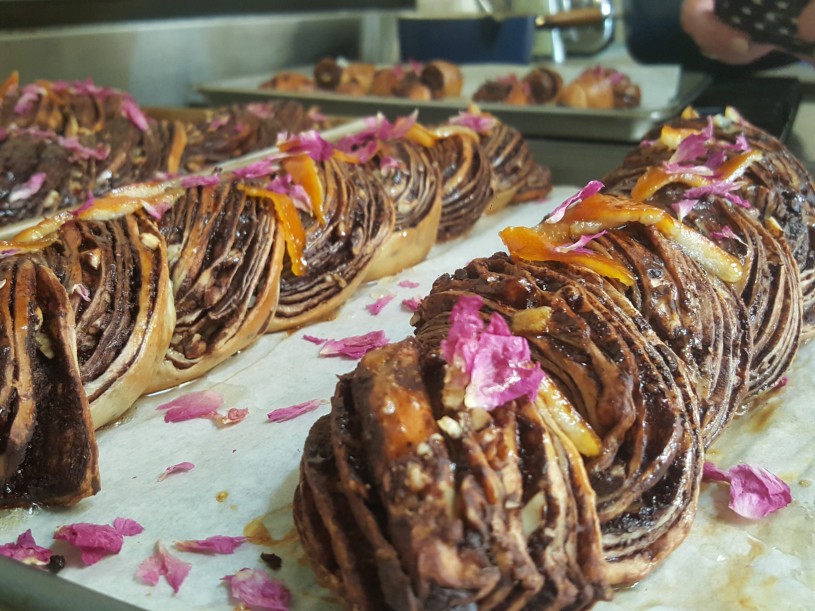
FROM PUFF PUFFS TO PANDESAL
The beauty of bread is that it can appear in many unique forms, depending on the culture and people making it. As part of the Kneaded: L.A. Bread Stories project, we are highlighting breads that have remained unchanged for centuries, like Middle Eastern unleavened bread that may date as far back as 562 BC, and others with new and innovative twists, like vegan pandesal. Some breads have traveled great distances to Los Angeles, like puff puff from Cameroon, while others, like acorn bread from the Indigenous Tongva people, have been here in Southern California all along. Quite a few breads can be easily found on the dinner table, like tortillas, while other breads are symbolic, like the importance of wedding cakes baked for LGBTQ+ couples once same-sex marriage was legalized in California.
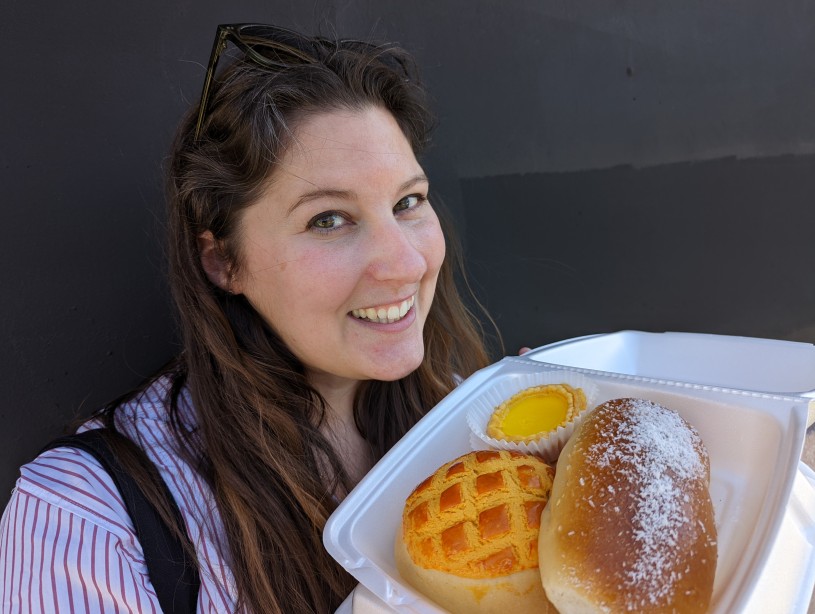
WHAT'S YOUR L.A. BREAD STORY?
Bread is one of the many threads that connect us within every community, neighborhood, and family. Whether you are in search of a neighborhood breadmaker who lovingly connects with their community or an at-home baker in search of that perfect bake, we have stories that share the incredible diversity found in our city while simultaneously showing what connects us beyond the confines of city borders. We saw these connections rise (pun intended) among our Museum staff while preparing to launch this year-long project. Below is a small selection of Museum at-home bakers and bread-lovers who, like me, understand that bread spans time and place to connect our souls.

Mara Naiditch
Mara Naiditch, Associate Vice President of Marketing & Enterprise, is a huge fan of bread and baked this adorable chall-urkey or turkeyshaped challah bread in 2021 when Thanksgiving weekend and the first night of Hanukkah overlapped.
Wes Oakley
Wes Oakley, NHM’s Video Content Creator, makes homemade cannoli’s, stromboli’s, focaccia bread, and even homemade mozzarella!
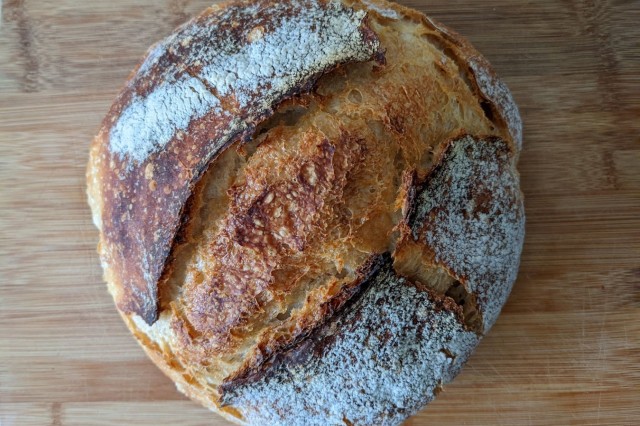
Lindsey Kelly
Lindsey Kelly, Program Manager, has been caring for her sourdough starter for quite some time now and making these delicious bakes at home, especially during the pandemic.
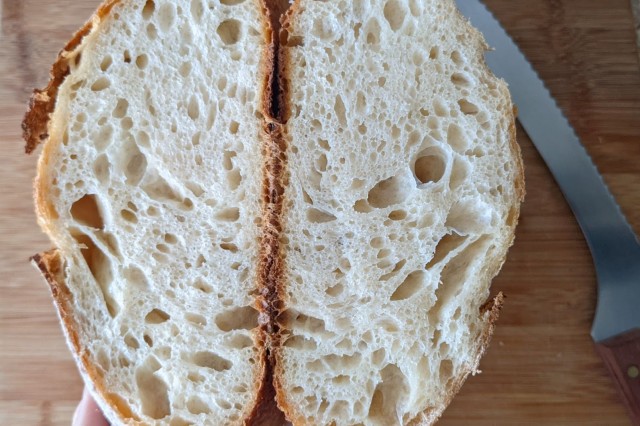
Lindsey Kelly
Lindsey Kelly, Program Manager, explained this “crumb shot” of her sourdough– “If you plan to eat your sourdough fresh out of the oven and want to slide the bread, you need to wait for it fully cool (overnight!) before you cut it open and truly know if the rise was successful... Talk about delayed gratification!
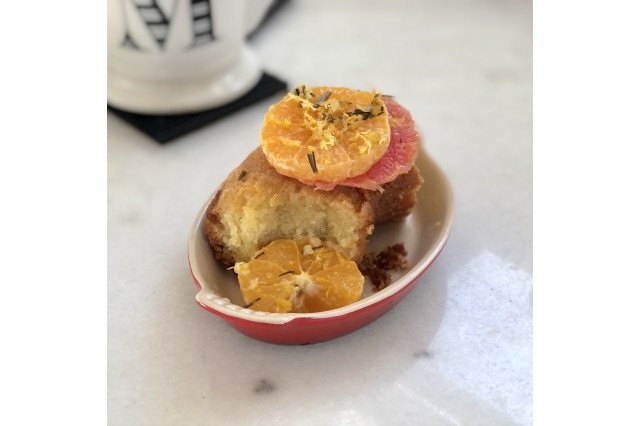
Dr. Mairin Balisi, La Brea's NSF Postdoctoral Research Fellow and Chancellor's Postdoctoral Fellow, baked this bread for her best friend from high school while they were isolated early on in the pandemic after contracting COVID-19. Mairin explained, "She pulled up in her car outside my apartment, and I ran the cake out to her, all masked and distancing. Later she sent me a photo of how she assembled the compote on the cake, and it was so cute! I am not a great gift-giver, but baking and sharing food is part of how I show people that I care, and I'm so glad that I could do that for my friend who had to be alone for the holidays.
1 of 1
Mara Naiditch, Associate Vice President of Marketing & Enterprise, is a huge fan of bread and baked this adorable chall-urkey or turkeyshaped challah bread in 2021 when Thanksgiving weekend and the first night of Hanukkah overlapped.
Mara Naiditch
Wes Oakley, NHM’s Video Content Creator, makes homemade cannoli’s, stromboli’s, focaccia bread, and even homemade mozzarella!
Wes Oakley
Lindsey Kelly, Program Manager, has been caring for her sourdough starter for quite some time now and making these delicious bakes at home, especially during the pandemic.
Lindsey Kelly
Lindsey Kelly, Program Manager, explained this “crumb shot” of her sourdough– “If you plan to eat your sourdough fresh out of the oven and want to slide the bread, you need to wait for it fully cool (overnight!) before you cut it open and truly know if the rise was successful... Talk about delayed gratification!
Lindsey Kelly
Dr. Mairin Balisi, La Brea's NSF Postdoctoral Research Fellow and Chancellor's Postdoctoral Fellow, baked this bread for her best friend from high school while they were isolated early on in the pandemic after contracting COVID-19. Mairin explained, "She pulled up in her car outside my apartment, and I ran the cake out to her, all masked and distancing. Later she sent me a photo of how she assembled the compote on the cake, and it was so cute! I am not a great gift-giver, but baking and sharing food is part of how I show people that I care, and I'm so glad that I could do that for my friend who had to be alone for the holidays.
The breadmakers highlighted in Kneaded: L.A. Bread Stories are a sampling of the innovative, resilient, trailblazing, and neighborhood breadmakers in L.A.— and it would not be complete without your L.A. bread story. I invite you to share your story, join the conversation on social media, and tag the Museum @NHMLA with #kneadedLA. In the spirit of sharing, below you will find my family povitica recipe – great year-round, not just on holidays – and I hope that you join me in putting our ovens to work.
I look forward to celebrating the people of L.A. who bring us together through the universality of bread making, making our city delicious with each new bite, and connecting us through both our stomachs and hearts.
Povitica (Walnut Bread)
Emily’s great grandparents, Stephen Penyock and Teresa Sojcok-Penyock emigrated from Slovakia and lived in Sugar Creek amongst a large Slavic community. There are popular filling types for povitica (pronounced “poh-vah-TEET-sah”) like poppy seeds, the Penyock-Baker family believes Teresa Sojcok-Penyock most often baked the walnut version because of the large walnut tree in their backyard. Emily can’t remember a Christmas without walnut bread and had a crash course in making it herself when stuck at home during the Covid-19 pandemic for the holidays.
This recipe was modified by the Penyock-Baker family from Mary Maglich’s recipe in the Sugar Creek Cookbook, a community cookbook from Sugar Creek, MO.
Bread ingredients
- ¾ cup lukewarm water (95-100 degrees)
- 1 teaspoon granulated sugar
- 3 packets of yeast (21 grams or 2 tablespoons + ¾ teaspoons)
- ½ cup whole milk
- 2 Tablespoons + 1 teaspoon granulated sugar
- 1 teaspoon salt
- 1 egg, beaten
- 4 Tablespoons butter, melted
- 4 cups bread flour
- 1 egg, beaten, for glazing bread
Filling ingredients
- ¾ cup whole milk
- 4 tablespoons butter, melted
- 1 teaspoon vanilla
- 1 ¼ cup granulated sugar
- ½ teaspoon salt
- 1 egg, beaten for filling
- 1 lb English walnut meats, ground fine
Making the bread
- Bloom the yeast by dissolving 1 teaspoon of sugar in lukewarm water in a small mixing bowl and adding yeast into the lukewarm water and sugar. Leave until frothy, about 10 minutes.
- Scald milk (put in a pot on the stove and heat to just before boiling, about 180 degrees) and cool to lukewarm: put milk in a large aluminum bowl and swirl around till it’s barely warm to the touch.
- Add sugar, salt, melted butter, and egg to the milk, and mix well before adding bloomed yeast mixture.
- Add flour gradually, stirring to make a smooth elastic dough. Add enough flour to make a soft dough that can be kneaded (you may not use all 4 cups).
- Knead well, then place in a greased bowl, cover with a kitchen towel, and let rise in a warm place (like on top of a warm oven) until doubled in size. Once doubled, punch it down and let it rise again to double in size. **While rising, make the nut filling.
- After the second rise, divide the dough into 3 equal sections.
- Preheat the oven to 350 degrees F.
- On a floured surface, roll out one section into a rectangle shape, until the dough is ¼ inch thick. (Some people like to flour a kitchen towel or saran wrap to roll the dough out on, to make the rolling process easier.)
- Spread ⅓ of the nut filling evenly to the edges, leaving a 1-inch wide clean edge on one long side of the rectangle.
- Starting on the long side of the rectangle, roll the dough towards the side with the clean edge, using that clean edge to stick to the dough to close the roll.
- Move to a parchment paper-lined baking sheet and tuck the ends under to seal the filling in. (Some people curve their loaves into a crescent moon shape or a circle. Others fold theirs on top of itself into a bread loaf pan to make a tall, multi-layered slice. My family prefers the long, straight, jelly-roll style.)
- Brush the last egg over the top of the loaves and bake for 45-50 minutes until golden brown. If it’s golden brown too early, cover with tin foil in the oven until done baking.
- Place on a wire rack to cool before slicing to eat.
Making the nut filling
- Scald milk, moving it to a large mixing bowl to cool.
- Add butter, vanilla, sugar, and salt to milk, and mix thoroughly.
- Add beaten egg and nuts to mixture, mix thoroughly.
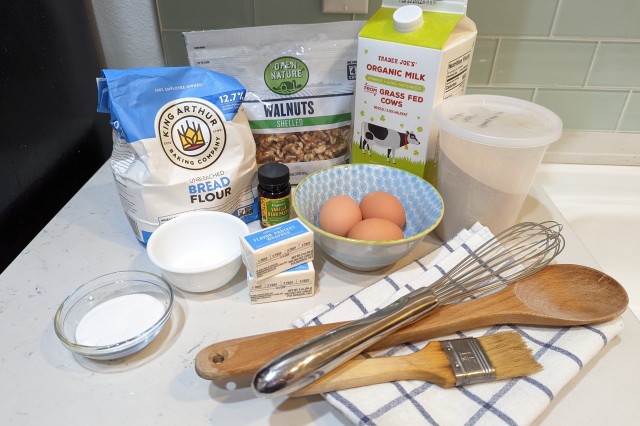
Gathering ingredients before starting ensures you have everything you need. Our family has always used King Arthur brand flour because of its high protein content and quality of wheat. I continue to support them because of their employee-owned business model and eco-focused growing practices.

When you have limited counter space, you can knead the dough in a bowl instead of on the counter. There’s also less mess to clean up!
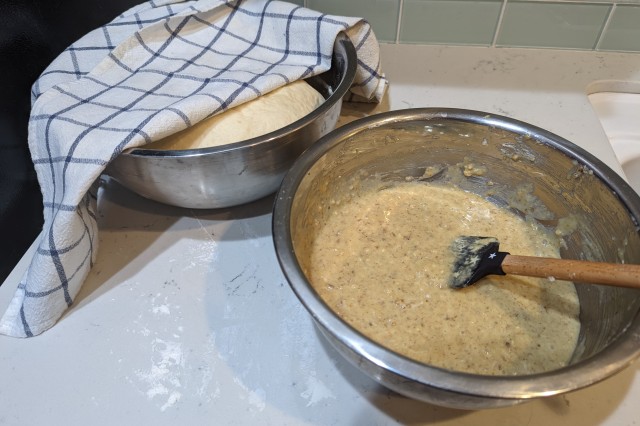
The filling isn’t pretty, but it’s so exciting to see the yeast at work as the dough rises – it’s “proof” (pun-intended) that you’re on the right path to delicious bread.
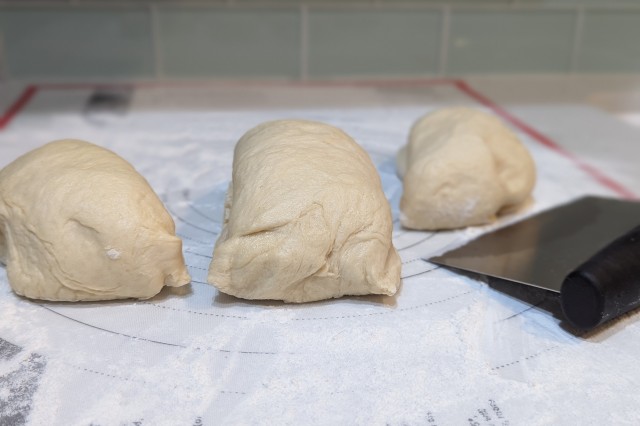
A bench scraper is one of my favorite kitchen tools; in this recipe, it makes portioning out dough a snap.
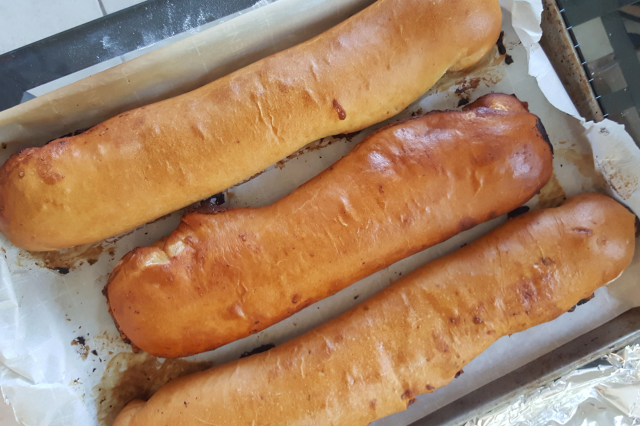
A shiny, golden brown surface and a hollow sounding tap on the bottom of the loaf means it’s baked to perfection! Some families shape the bread into a wreath or fold them into loaf pans, but our family has always baked them in straight loaves.
1 of 1
Gathering ingredients before starting ensures you have everything you need. Our family has always used King Arthur brand flour because of its high protein content and quality of wheat. I continue to support them because of their employee-owned business model and eco-focused growing practices.
When you have limited counter space, you can knead the dough in a bowl instead of on the counter. There’s also less mess to clean up!
The filling isn’t pretty, but it’s so exciting to see the yeast at work as the dough rises – it’s “proof” (pun-intended) that you’re on the right path to delicious bread.
A bench scraper is one of my favorite kitchen tools; in this recipe, it makes portioning out dough a snap.
A shiny, golden brown surface and a hollow sounding tap on the bottom of the loaf means it’s baked to perfection! Some families shape the bread into a wreath or fold them into loaf pans, but our family has always baked them in straight loaves.
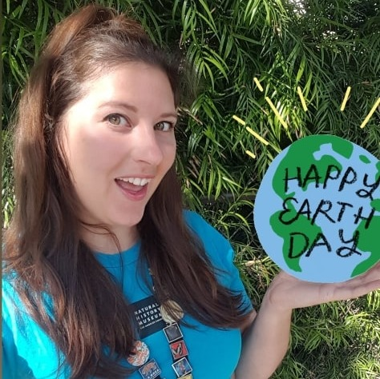
Emily Baker has been a Museum Educator for the Natural History Museum of Los Angeles County since 2016 and especially loves working with our youngest guests through youth programming. Emily’s passion is helping people consider how tied we are to the earth and to each other through food and her most prized possession is a vintage Disneyland ice cream menu from its opening year, 1955. If you ever see her at the Museum, be sure to ask her about the history of California navel oranges!
Following the success of Kneaded: L.A. Bread Stories, we're celebrating the history, heritage, and communities of Los Angeles through the lens of different cultural traditions. This year, L.A. at Play highlights the vibrant and visionary work of artisans who fabricate dolls and figurines using a variety of techniques and materials.
